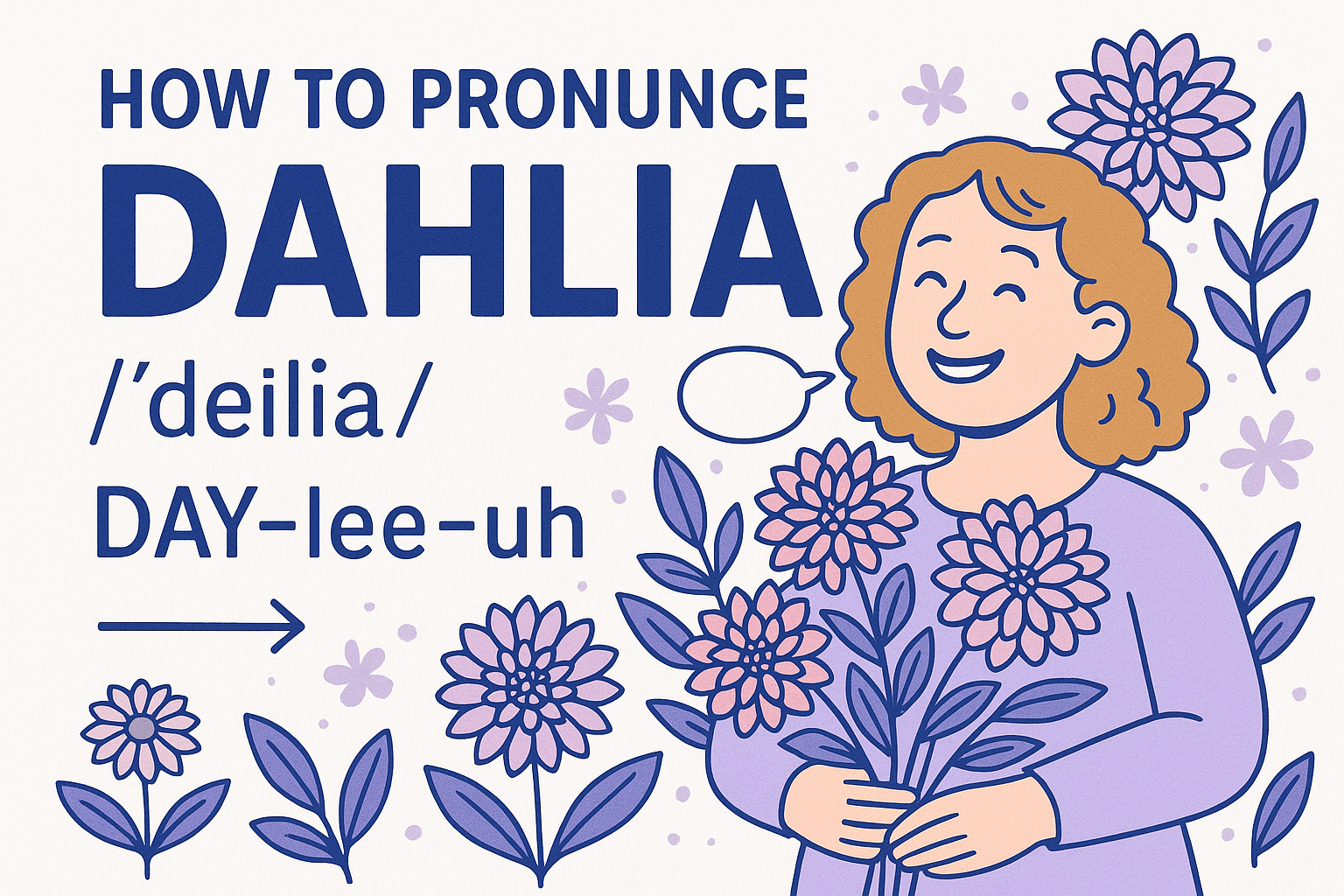How to pronounce
Dahlia
You’ve probably admired the garden flower “dahlia,” but its pronunciation shifts by region.
Step‑by‑Step Pronunciation Guide
American English: /ˈdeɪ.li.ə/ → DAY‑lee‑uh
Breaking it down — DAY (rhymes with “say”), lee, uh (quick ending). Stress the first syllable.
British English: /ˈdɑː.li.ə/ → DAH‑lee‑uh
Breaking it down — DAH (open “ah” as in “father”), lee, uh. Stress the first syllable.Both versions have three syllables and end softly with “‑uh.” Use DAY‑lee‑uh in North America; DAH‑lee‑uh is common in the U K., Australia, and many botanical circles.
Common Mispronunciations
• “dal‑EE‑uh” – moving the stress to the middle
• “dah‑LEE” – dropping the final syllable
• “dall‑ya” – compressing it into two syllables
Practice Sentences
• “The dahlia display won best in show.”
• “I planted red dahlias along the fence.”
• “Her bouquet featured a giant café‑au‑lait dahlia.”
Dahlias in Garden Culture
Since their introduction to Europe in the 18th century, dahlias have symbolized elegance and inner strength. Today, dahlia societies host annual shows where growers compete in forms like cactus, decorative, and pom‑pom.

Definition of
Dahlia
The dahlia is a tuberous perennial native to Mexico and Central America, prized for its large, colorful blooms. With thousands of cultivars, dahlias are staples of summer and autumn gardens and feature prominently in floral arrangements and competitions.
What does it mean
Dahlia
Named after Swedish botanist Anders Dahl, who studied the plant after its introduction to Europe from Mexico in the late 18th century.
Frequently asked questions
Auto-record your calls for instant
feedback on communication

Know how to improve speaking
after every Google Meet call





.svg)
.avif)
